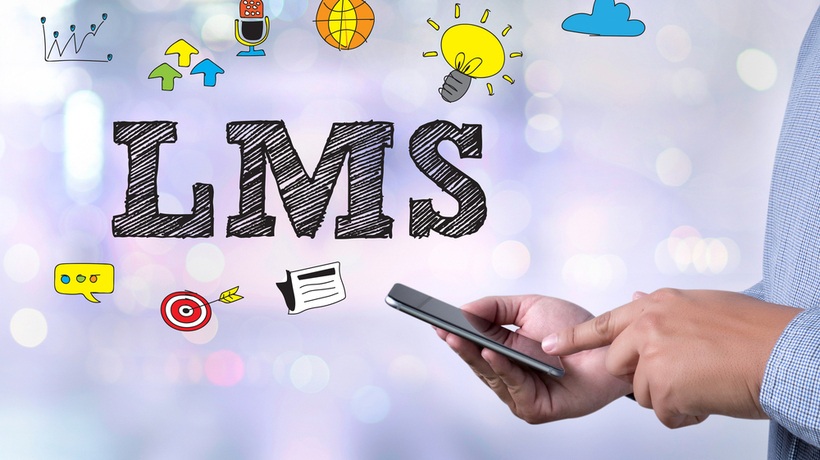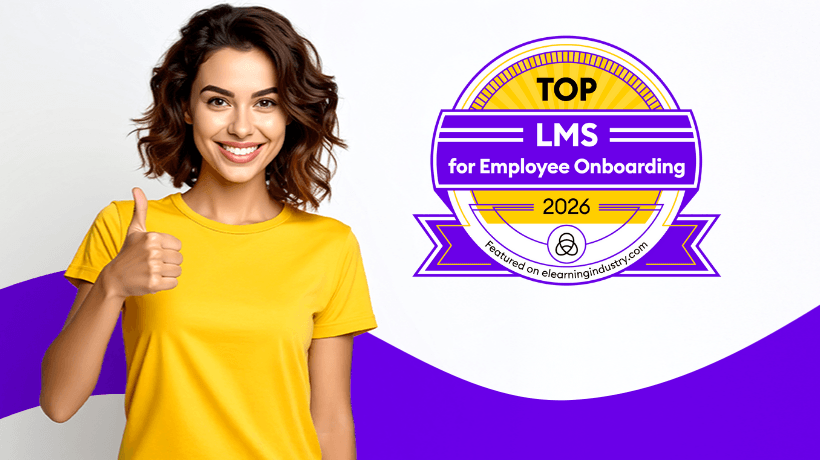Learning Management System (LMS)
LMSs are the foundational software of most eLearning platforms. They are capable of delivering, tracking, and managing various types of online learning and their users. Content authoring is an extensional functionality of this system. And cloud hosting is a storage and delivery mechanism of this system. Content authoring and cloud hosting may or may not be included as part of an LMS’s offering.
LMS Users
Before describing many of the features found in LMSs, it will be helpful to know what type of LMS users exist. LMSs typically consist of five types of users: infrastructure, administrator, trainer, trainee, and content designer. For explanatory purposes, this section will describe each type of user with defined capabilities. However, in practice, the capability of a type of user can be changed. Settings allow different types of users to have more or less authority. Depending on the application of the LMS some of these users can even be consolidated or others may be added.
Infrastructure Users
An infrastructure user has the highest level of control in an LMS. In addition to having the same control as an administrator, they are able to perform system updates, integrate additional software packages (content authoring, analytic software, plug-ins, etc.), change server and security settings, and perform site appearance customization. The setup of an LMS and any work performed on the back-end, sometimes requiring code, also falls under the domain of an infrastructure user. If you are purchasing a commercial LMS solution, this user is typically reserved for your provider.
Administrative Users
The administrative user has the highest level of control on the front-end. In addition to having the same control as the trainer, they are able to define the authority of trainers, create trainer accounts, and set front-end platform settings. These settings are sometimes difficult to navigate and may require the help of an expert to configure (assuming your provider is not already the administrative user). The difficulty of this task is usually because most LMSs are designed to meet the needs of various markets. And as a result, when an LMS is selected for a particular use case it must be customized via a down selection of the LMS’s available features. One exception to this is the bottom-up approach of WordPress LMS plugins.
Trainers
Trainers are the educators of an LMS platform. They design course syllabi, (communicating the nature of a course and the responsibility of the trainee), collaborate with the content designer in course creation, upload course content (documents, multimedia, etc.), communicate with trainees (via messages and forums) enroll trainees in courses, track trainee progress, and provide course completion certifications/grades.
The roles of a trainer may be subdivided into internal and external course management. The external course management may involve managing course content, tracking, and reporting. And the internal management may involve communicating with and managing trainees.
Trainees
The trainee is the user taking the course(s). The activities a trainee engages in can include: enrolling in courses, engaging with course content, taking quizzes and tests, and communicating with trainers and other trainees. The administrator can set up whether a trainee can self-enroll or if permission is required to enroll in a course, settings can be adjusted to allow trainers to make this determination. Depending on the LMS, and communication standard employed, trainees may also be able to track their course progress.
Content Designers
Content designers are users that typically do not have much authority with the course execution process, their role is mainly to communicate with administrators and trainers to create course content.
Delivery
LMSs are capable of delivering various types of online learning, which may include: asynchronous, synchronous, blended, embedded, and social. Asynchronous learning is on-demand learning not occurring in a particular place or time (e.g., learner-led). Synchronous learning occurs in real time with multiple users (e.g., trainer(s) and trainees) usually via web-conferencing and messaging applications. Blended learning is a combination of asynchronous and synchronous learning. Embedded learning is “learning while doing as opposed to learning to do.” For example, a task can be affirmed or corrected in real time. And social learning occurs when a trainee engages with other trainees or trainers, which can occur via a forum, Q&A board, blog, wiki, or social media application.
Tracking And Reporting
The tracking and reporting capabilities of an LMS depend on the communication standard they support. It also depends on the robustness of the software that is integrated to support these standards (i.e., analytic: engine, repository, and dashboard).
Administration
Some of the learning events LMSs are capable of managing include: courses, catalogs (i.e., a series of courses), assignments, assessments, and calendars (where scheduling and notifications can be performed). Many of these features are highly automated. For example, assessments (e.g., quizzes, tests, and examinations) can be “delivered, scored, recorded, and analyzed without human intervention [1]."
LMSs can also manage various user-related features, which may include: group creation and organization, course registration, prerequisite verifications, mapping trainee progress, and course completion certifications.
The delivery, tracking, and administrative capabilities of LMSs are one of the reasons they have been “instrumental in assuring that organizations meet rigid certification requirements in such vertical markets as healthcare, finance, and government [2].”
Additional Features
Some additional features of LMSs may include gamification, multilingual capabilities, the creation and use of learning objects, appearance customization (e.g., branding and white labeling), and repositories for courses, files, trainee activity, reports, and certifications.
Additional Tools
LMSs can also integrate and share data with other tools and systems. Some of the tools that may be added to an LMS include web conferencing applications, eCommerce applications, content libraries, and content authoring tools. In order to integrate one of these third-party external tools into an LMS, there must be particular communication between the tool and LMS. The IMS Global Learning Consortium (IMS Global) has developed a standard called Learning Tools Interoperability (LTI), which allows for tools and LMSs that support this standard to be interoperable. Some of the systems LMSs are capable of integrating include HR, CRM, LAP, LCMS, and ERP.
Acquiring An LMS
If your company decides that an LMS is the training solution you would like, there are a few different types of LMSs and ways they can be acquired
An LMS can be acquired by one of two methods: building it or buying it. An LMS can be built from the ground up, however, a more common strategy is to build it with open source software or with WordPress plug-ins. LMSs can also be purchased; these “commercial solutions” are built from the ground up (“Proprietary Solution”) or by integrating and building upon open source and third-party software (“Commercial OSS Solution”).
Ground Up
Building an LMS from the ground up is a resource-intensive process, that is usually “beyond the capabilities and budgets of many organizations [1]." Even if it is not, this solution tends to be more expensive than commercial solutions or customizing open source software.
Customizing Open Source
Customizing open source software is a reasonable alternative to building your own LMS from the ground up because it will save a lot of time and money on development. This solution avoids the LMS licensing fees associated with some commercial solutions, however, there may be other licensing fees for hosting, analytic software, or content authoring tools.
Some of the other potential costs associated with customizing open source software include: setting up the LMS (e.g., feature selection, plug-in integration, theme integration, and white labeling), setting up the server, setting up the analytics, updates, and maintenance (e.g., LMS and server), consulting (e.g., server, LMS, and content authoring) and contracted work (e.g., customization and troubleshooting).
Even though there are costs associated with customizing open source software, over time it may be one of the least expensive ways to implement a training solution. For example, a “manager of a large U.S. government agency’s eLearning initiative reported to the authors that switching to an open-source enterprise LMS is costing them 60% of the ongoing costs of the commercial system they had been using [1]."
WordPress LMS Plug-ins
WordPress is an open source content management system (CMS) primarily focused on website design and publication. There are several WordPress LMS plug-ins that will allow you to construct a training solution. These plug-ins do not have as much functionality and do not scale as well as customized open source or commercial solutions. However, functionality can be added, to some degree, with additional plug-ins. Unfortunately, these plug-ins sometimes have compatibility issues. Also, adding plug-ins will not only increase the size of your site, which increases server costs, but many of the plug-ins that add functionality have their own licensing fees. The security of WordPress LMSs will also depend on how often each plug-in is updated. If it is not updated regularly the user may need to update it themselves or integrate a new plugin to avoid certain security risks.
Users of WordPress LMSs will need to build and manage their site, configure and manage server settings, perform regular updates, and potentially hire contracted workers (e.g., consultants, IT professionals, and developers) and purchase a content authoring license.
Commercial Solutions
Commercial solutions usually provide many of the features and services necessary to have a robust eLearning platform (e.g., set-up, customization, content authoring, analytics, hosting, updates, and IT support). Be aware some of these services may cost extra and others may not be offered by some commercial solutions.
Commercial solutions are either customized for a particular use case or generalized for many use cases. Generalized commercial solutions usually require some level of customization to meet a customer's needs; and if these solutions do not require customization, it is likely that a customer will be paying for features that they may not use. One of the drawbacks of proprietary solutions, in comparison to commercial OSS solutions, is that updates may not be as regular and may cost extra to perform.
In general, commercial solutions are one of the fastest ways to implement a training solution. And their costs are fairly predictable, which makes it is easy for companies to incorporate into their budget.
Please leave a comment below or reach out to the author for source citations. This article is Part 2 of a four-part series, read Part 1, Part 3, and Part 4.
References:
[1] Choosing Series
[2] LMS and LCMS: What's the Difference?
Sources:
- “What Is the Difference between LMS, CMS or LCMS?” 2017. Continu Blog (blog). November 3, 2017.
- Greenberg, Leonard. n.d. “LMS & LCMS Comparison.” Accessed January 27, 2019.
- “Top Learning Content Management Systems - 2019 Reviews.” Accessed January 27, 2019.
- Nipun, Sharma. 2018. “LMS And LCMS Platforms: Can You Tell The Difference?” eLearning Industry. April 5, 2018.
- Irlbeck, Sonja, and Joanne Mowat. n.d. “Learning Content Management System (LCMS).” ResearchGate. Accessed January 27, 2019.
- “LMS vs. LCMS.” 2017. Xyleme (blog). August 3, 2017.
- Dubowy, Max. n.d. “LMS vs LCMS vs CMS...Changing One Letter Makes a Big Difference.” OpenSesame. Accessed January 27, 2019.
- Berking, Peter, and Shane Gallagher. n.d. “Choosing A Learning Management System (LMS) - ADL Initiative.” Accessed January 27, 2019.
- “What Is Blended Learning? | LMS by Mindflash.” n.d. Accessed January 27, 2019.
- Laskaris, John. 2016. “Social Learning: The Revolution in ELearning.” TalentLMS Blog (blog). May 16, 2016.
- Pappas, Christopher. 2016. “Social Learning Vs Informal Learning: Can You Tell The Difference?” eLearning Industry. March 25, 2016.
- “Asynchronous Learning.” 2013. The Glossary of Education Reform. May 15, 2013.
- “Asynchronous E-Learning Vs. Synchronous E-Learning.” n.d. Accessed January 27, 2019.
- Paula. 2019. “Blended Learning - What Is It and How Is It Used?” LearnUpon. January 17, 2019.
- “Embedded Learning.” n.d. Accessed January 27, 2019.
- “What Is A Learning Management System? LMS Basic Functions And Features You Must Know.” eLearning Industry. December 3, 2017.
- “Paradiso LMS Features.” n.d. Paradiso Solutions (blog). Accessed January 27, 2019. <https://www.paradisosolutions.com/lms-features>
- “Moodle Features.” n.d. Accessed January 27, 2019. <https://docs.moodle.org/36/en/Features>.
- “Learning Management System Features and Benefits.” 2015. BIS Training Solutions. December 15, 2015.
- Powell, Matt. 2017. “What Is a Learning Management System or LMS.” Docebo (blog). May 17, 2017.
- “Content Libraries - Absorb Learning Management System.” n.d. Absorb LMS (blog). Accessed January 27, 2019.< https://www.absorblms.com/features/content-libraries/>.
- “Basic Overview of How LTI Works | IMS Global Learning Consortium.” n.d. Accessed January 27, 2019.
- “What Is WordPress? | WordPress 101 Tutorials.” n.d. Accessed January 27, 2019.
- “Pros and Cons of WordPress Learning Management Systems.” 2018. My Learning Hub (blog). April 26, 2018. <https://www.mylearninghub.com/lms/blog/Pros-and-cons-of-WordPress-learning-management-systems>.
- Thakare, Rohan. 2017. “The Pros And Cons Of Using A WordPress Learning Management System.” eLearning Industry. October 15, 2017.
- Parmley, Lisa. 2018. “Pros and Cons of WordPress LMS Plugins [+Top 2 Plugins Revealed].” Business Bolts (blog). October 7, 2018.
- Yupangco, Jim. 2018. “Open Source Vs. Proprietary LMS: Assessing Return On Investment.” eLearning Industry. January 13, 2018.








